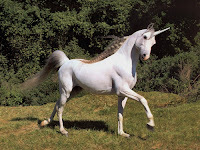b. The arm of a human and the forelimb of a horse are considered homologous structures. Each structure contains similar bones. A humerus, carpals, metacarpuls, and phalanges. These structures however serve different funtions. The human arm aids in lifting, climbing, use of tools, and countless other activities, while the horses forelimb is mainly used for running. This homologous trait represents a genetic similarity that is evident in all mammals.
c. Generally all mammals derive from a similar ancestor, and this is evident in similarities in much of their bone structure.
d.
2. a. Birds and insects share an analogous structure in their wings. Birds are part of the avian family while insects belong to the family of arthropods.
b. Both species have wings but are composed of completely different structures. Bird wings contain hollowed out bones which allow them to be light enough to fly, but still agile enough to fly at high speeds and altitudes. Insect wings don't contain bones and are mainly extensions of their own exoskeletons. Although the structure of each species' wings are different, they are still functionally similar in the aid of flight.
c. Although the common ancestor of these two species (which is probably some sort of reptile or fish) did not share the similar analogous trait, they did most likely evolve this structure due to similar environmental necessities.
d.




Good job on both sets of traits. Image-wise, I would have liked to have seen pictures of the skeleton for the homology to see the similarities. How many phalanges does a horse have?
ReplyDeleteThe ancestor of birds and insects actually goes far back beyond fish, back the early arthropods, 10's or 100's of thousands of years ago, but as you say the issue is whether that ancestor had the trait, and if that trait was passed on to both lines of descent.